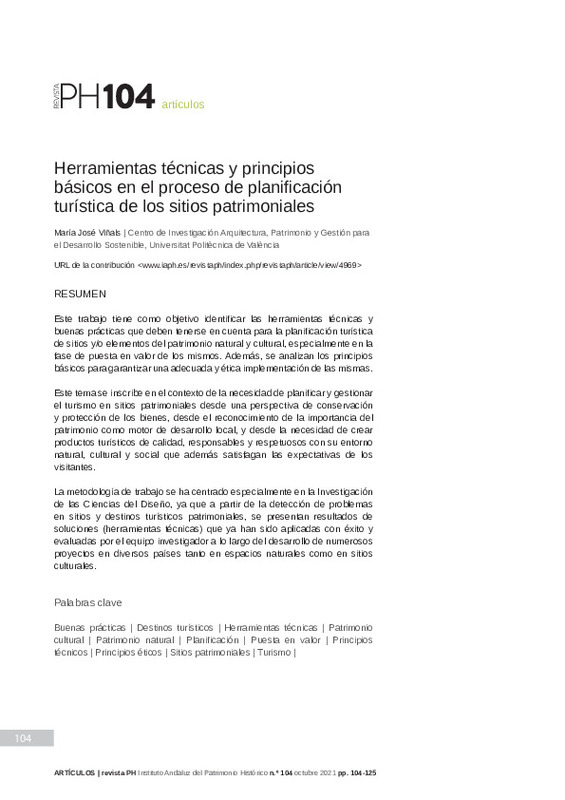JavaScript is disabled for your browser. Some features of this site may not work without it.
Buscar en RiuNet
Listar
Mi cuenta
Estadísticas
Ayuda RiuNet
Admin. UPV
Herramientas técnicas y principios básicos en el proceso de planificación turística de los sitios patrimoniales
Mostrar el registro completo del ítem
Viñals Blasco, MJ. (2021). Herramientas técnicas y principios básicos en el proceso de planificación turística de los sitios patrimoniales. Revista PH (Online). (104):104-125. https://doi.org/10.33349/2021.104.4969
Por favor, use este identificador para citar o enlazar este ítem: http://hdl.handle.net/10251/189654
Ficheros en el ítem
Metadatos del ítem
| Título: | Herramientas técnicas y principios básicos en el proceso de planificación turística de los sitios patrimoniales | |
| Autor: | ||
| Entidad UPV: |
|
|
| Fecha difusión: |
|
|
| Resumen: |
[EN] This paper aims to identify the technical tools and best practices that should be taken into account for tourism planning of
natural and cultural heritage sites, especially in the enhancement phase. In addition, it ...[+]
[ES] Este trabajo tiene como objetivo identificar las herramientas técnicas y buenas prácticas que deben tenerse en cuenta para la planificación turística de sitios y/o elementos del patrimonio natural y cultural, especialmente ...[+]
|
|
| Palabras clave: |
|
|
| Derechos de uso: | Reserva de todos los derechos | |
| Fuente: |
|
|
| DOI: |
|
|
| Editorial: |
|
|
| Versión del editor: | https://doi.org/10.33349/2021.104.4969 | |
| Código del Proyecto: |
|
|
| Tipo: |
|









